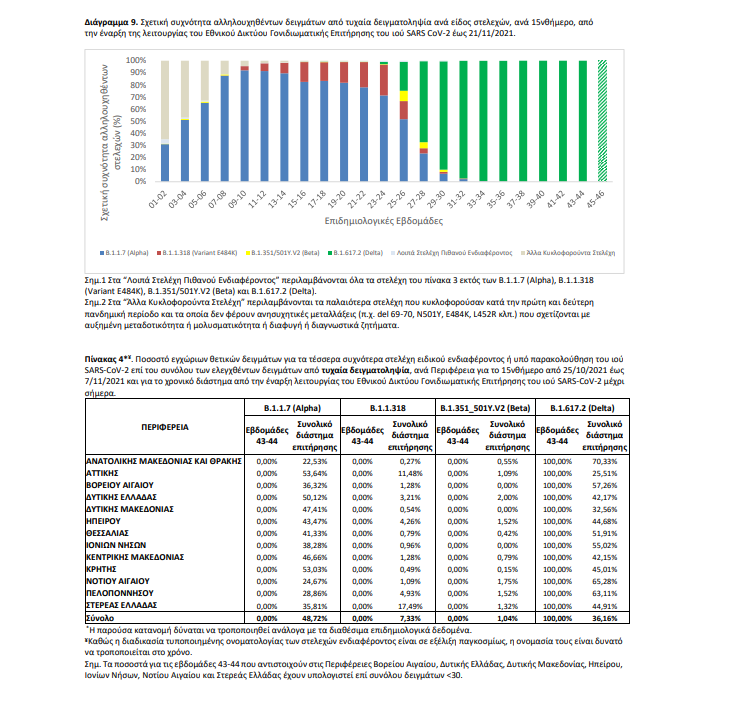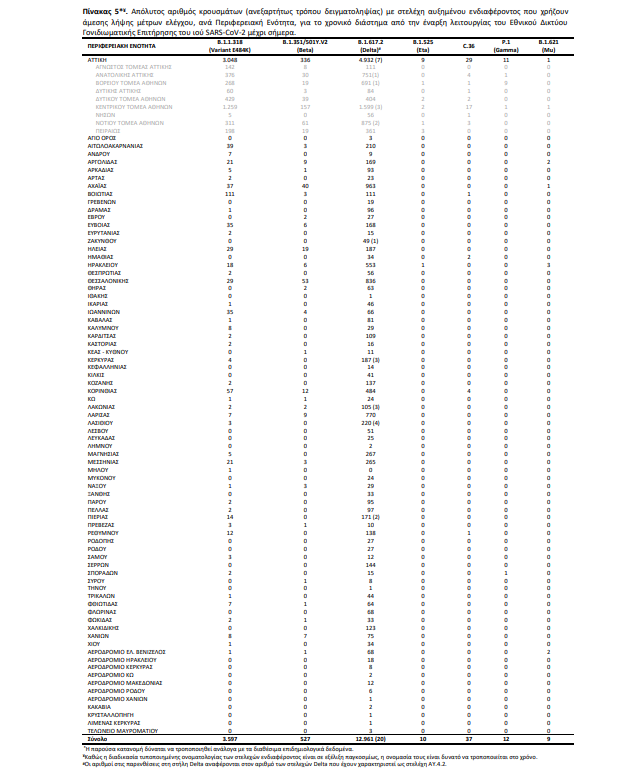Completed by the National Network of Genomic Surveillance of the SARS-CoV-2 virus, operating under the coordination of EODY, the genomic analysis in 539 samples selected randomly or targeted and covering the period October 11, 2021 to November 12, 2021. of 539 samples, a total of 526 samples with variants of special interest (Variants Of Concern – VOC) emerged. Of the 526 samples with strains of special interest, all relate to the Delta strain (Table 3).
Five of the 526 Delta strains belong to the strain ΑΥ.4.2, which were identified in case samples in the Regional Units of Lassithi (3) and Pieria (2). Since the launch of the National SARS-CoV-2 Genomic Surveillance Network, a total of 36,173 samples of domestic cases have been tested in the country.
Of these, 31,949 come from random sampling, 3,483 come from targeted sampling or sample selection, and for 741 samples the selection method is not available.
Among the 31,949 randomly selected samples in the territory, the four most common stakeholders of special interest or surveillance that have been isolated are Alpha, at 48.72%, followed by Delta at 36.16%, B.1.1.318 (Variant E484K) with a percentage of 7.33%, and Beta with a percentage of 1.04% (Table 4).
The evolution over time of the relative frequency of sequenced samples from random sampling per species of strain, up to week 44 is shown in Figure 9, while additional provisional data are given for weeks 45-46. Of the 3,483 samples taken or selected in a targeted manner, 3,319 were found to be of special interest or under observation. Of these samples, 37.61% relate to B.1.1.318 (Variant E484K), 36.03% to Delta, 15.48% to Alpha, 5.80% to Beta, 0.11% to C.36 , 0.09% in Gamma, 0.09% in Eta and 0.09% in A.28.
In addition, a total of 392 strains of special interest or under surveillance or interest have been isolated from samples of imported cases, of which 258 relate to Delta, 113 to Alpha, 7 to Mu, 6 to Beta, 4 to B.1.1.318 (Variant E484K) , 1 in Eta, 1 in C.36, 1 in Kappa, and 1 in B.1.1 (Variant E484K). For stakeholders in need of immediate control measures currently in the country, the geographical distribution by Regional Unit is presented in Table 5.
.












